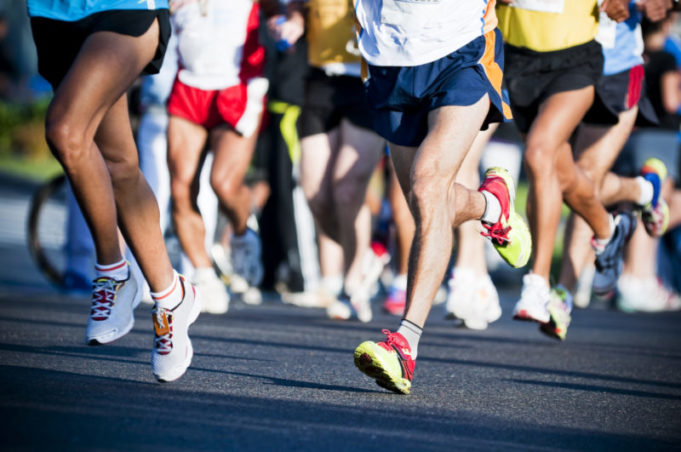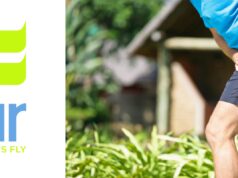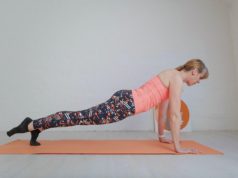We all have our running goals, perhaps to run faster, run longer, or simply to get into the habit of running regularly. The one biggest threat to each of these goals is unfortunately the risk of injury.
Overuse injuries such as Runner’s Knee (aka Patellofemoral Pain) are all too common amongst runners, with the knee itself being one of the most frequently injured areas.
If you’ve been diagnosed with Runner’s Knee, be sure to checkout the three exercises that comprise the 10 minute rehab workout in the video above!
Ten Minute Runner’s Knee Workout
It would be remise of my not to state the obvious here; if your knee hurts, get it checked-out at the physio! It’s important you get a proper diagnosis.
What follows is to help you understand why you’re performing each exercise 🙂
The exercises featured in the video above were specifically chosen as they each help to address one of the common causative factors which lead to runners suffering with Runner’s Knee.
Quads Stretch
One common trait I see in runners who present with classic runner’s knee (patellofemoral pain) or ITB syndrome is tightness in the quads muscles of the front of the thigh.
Tight quads can create imbalances around the patella (the knee cap) and intensify loading at the patellofemoral joint of the knee.
This simple side-lying quads stretch is an easy way to work on reducing this tightness.
Lay on your side and slightly bend your bottom leg to create a more stable base, and help to avoid overly arching your low back. From there reach back and grab the ankle of your top leg and pull your foot towards your butt.
Keep your core engaged and push your hips forwards as you perform this stretch, so as to focus the stretch on the front of your thigh, rather than simply arching your back.
Once you can feel this stretch, keep your thighs parallel and hold the position for 30 seconds 3 times each side.
Glute Activation
You’ve probably heard it before, but many of us runners need to learn to use our butt muscles more! Learning to activate and then subsequently use your gluteal muscles is one particular goal of these runner’s knee exercises
The glutes are so important not just as hip extensors, but also in their role of providing hip stability. If a runner isn’t good at stabilising their standing hip, the knee is usually the joint that pays the price.
Before we move onto an exercise to practice stability on weight bearing, this second exercise will help you engage those butt muscles more effectively!
To begin with, lay on your back with your heels positioned close to your butt and your knees close together.
With a resistance band placed around your knees, push down through your heels and clench your butt as you raise your hips into a bridge position.
Once at the top of the bridge, pull your knees apart against the resistance of the band.
You should feel the muscles around the sides and back of your hips working hard here!
Hold that ‘knees apart’ position for a slow count of 5 and repeat this for 10 repetitions.
Do this once through to begin with, and over time you can build to 2-3 sets each session.
Before I describe the third of these exercises, it’s important for me to point out that these are just three of a whole host of different exercises that I might use to rehab runner’s knee.
In reality any effective rehab programme has exercises that progress over time to rebuild your body and address your individual weak links.
Single Leg Mini-Squat
So it’s all well and good working on quads mobility and engagement of key muscle groups such as those glutes.
But one vital piece in the knee rehab puzzle is teaching your body to improve control of the knee dynamically when standing on one leg, just as we would be when running. This simple exercise achieves just that.
More on this here:
Knee Stability Exercise for Runners
Standing on one leg on a raised platform, first reach forwards with the swinging leg and touch your heel on the ground in front of you, then slowly reach back and touch your toe on the ground behind you.
This movement of once back and forth constitutes one repetition. You should be aiming to perform 3 sets of 10 reps on each side.
The key here is balance and control. You’ll be working hard around the hip and ankle to provide stability for the knee. Many runners will feel the knee drifting inwards towards the typical ‘knock-kneed’ position. We want to avoid this!
You may well find it helpful to perform this exercise in front of a mirror to monitor the position of your knee throughout the movement.
I hope you’ve found these runner’s knee exercises helpful. Give them a go at home, and remember – if it hurts – stop and get it looked at!






